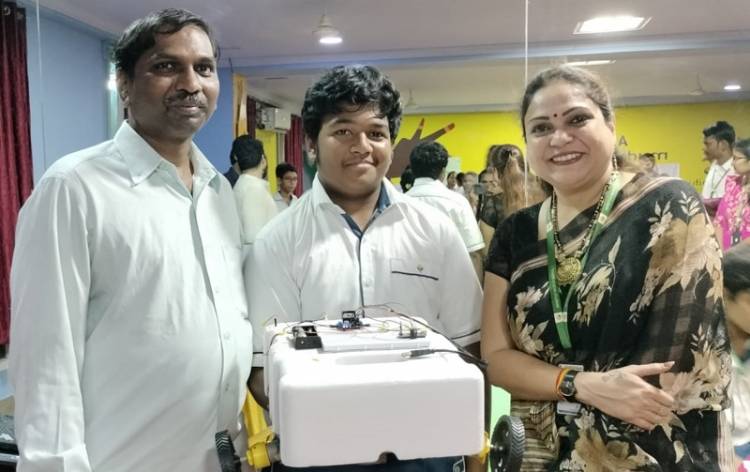Embracing Innovation: School Children Lead the Way in AI Adoption

In the ever-evolving landscape of artificial intelligence (AI), it is often assumed that advanced technological innovation is the domain of higher education and professional researchers. However, a recent experience at Ambitus School has proven otherwise, leaving me both surprised and inspired by the ingenuity of young minds.
During a visit to Ambitus School Ambiquest Science Fair, I encountered a remarkable 10th-grade student named Harsha. Harsha developed an AI project that allows a model car to move using just his hand movements. This innovative project is a testament to the boundless creativity and technical acumen that young minds can possess. Harsha's project goes beyond mere hobbyist tinkering; it integrates sophisticated concepts such as gesture recognition and machine learning, pointing to a bright future where today's schoolchildren will be tomorrow's AI pioneers.
As a motivational speaker, author of the upcoming book "GENAI: The Two Trillion USD Opportunity," and a thought leader in the field of Generative AI, I have trained over 2,400 students and 500 engineering college faculty members. In Phase 1 of our mission, we covered around 75 engineering colleges, and now in Phase 2, we are extending our reach to 20,000 junior colleges and schools. Witnessing Harsha's ingenuity, I was deeply impressed by his potential. Seeing the promise in this young innovator, I requested the Head of School, AWS Vijayawada, Sri Priya Madam (who coincidentally was in same room at that time) to see Harsha's exhibit and took a photo with them to commemorate the moment. Harsha's discussion included advanced concepts like Elon Musk's brain-machine interfaces, demonstrating a level of understanding and vision that was truly remarkable.
Another notable experiment at the event was a demonstration of Hyperloop and maglev magnetic levitation by another group of students. Although this was only a process demo, the clarity with which these young innovators explained the principles of magnetic levitation was commendable. These experiments, particularly Harsha’s working model, highlight a growing trend where schoolchildren are adopting and innovating with AI and advanced technologies faster than many of their college counterparts.
Unlike their older counterparts who often rely on traditional methods and simulations, these young learners approach AI with an openness and lack of bias, enabling them to explore and create in ways that are truly groundbreaking. In contrast, many engineering college students still rely on traditional methods and simulations to study self-driving cars. While tools like DRK (Deep Reinforcement Learning) are essential for understanding the theoretical underpinnings of AI, there is a noticeable gap when it comes to practical, hands-on innovation. Harsha’s project exemplifies how younger students are not just catching up but are potentially leading in certain areas of technological adoption and creativity.
As the former lead of Sales Intelligence at TCS, I have been prompting a call to action for educational institutions at all levels to adopt GENAI. There is a need to foster environments where curiosity and practical application are encouraged from an early age. Schools should continue to support and provide resources for their students to explore AI and other emerging technologies. Similarly, colleges and universities must adapt their curricula to include more hands-on, project-based learning experiences that can inspire the same level of enthusiasm and innovation seen in younger students.
In conclusion, Harsha’s project is more than just a successful demonstration of AI; it is a beacon of the potential within our schoolchildren. As educators and mentors, it is our responsibility to nurture this potential, ensuring that the next generation is equipped not just to understand AI but to drive its future. Let us celebrate and support the remarkable achievements of young innovators like Harsha, who remind us that the future of AI is indeed bright and boundless.
The Author is Uma Desu, Chief Artificial Intelligence Officer, GENAIPioneer(www.genaipioneer.com) and CEO, IntelliIndia (www.intelliindia.biz).

 admin
admin 























Comments (0)
Facebook Comments